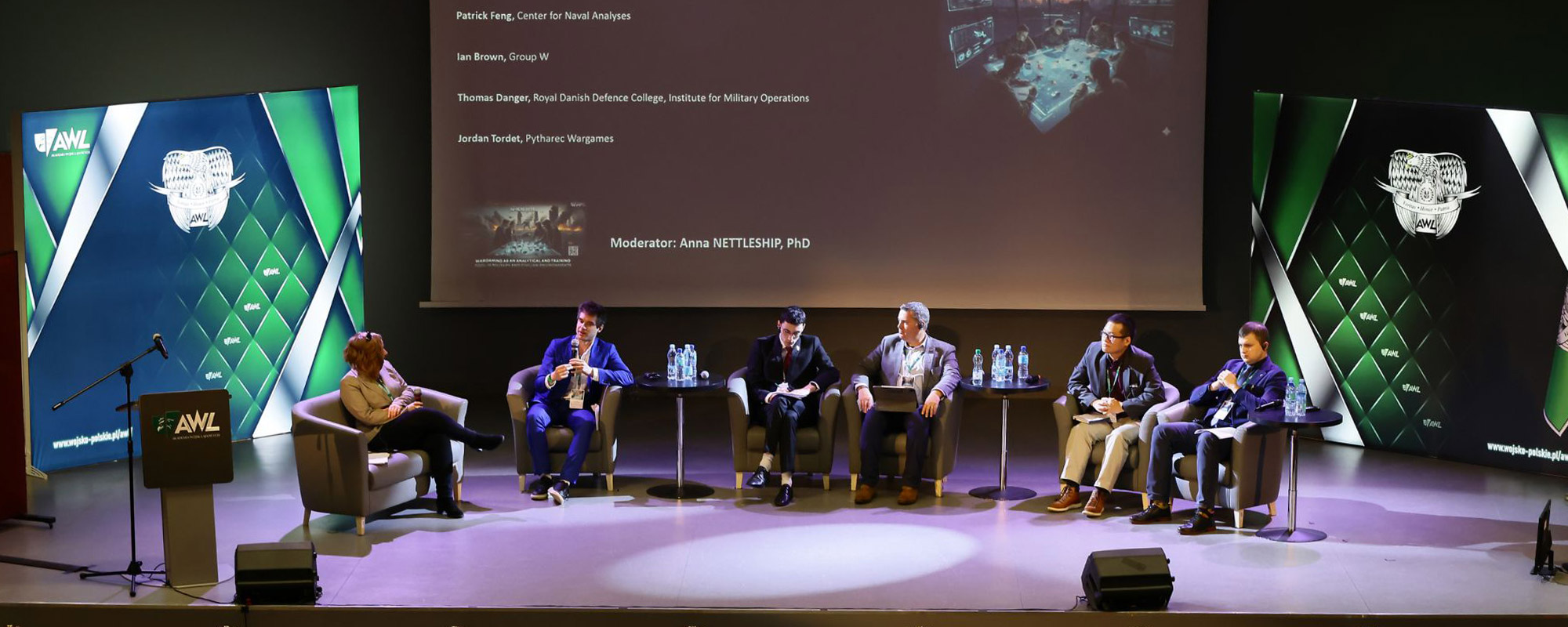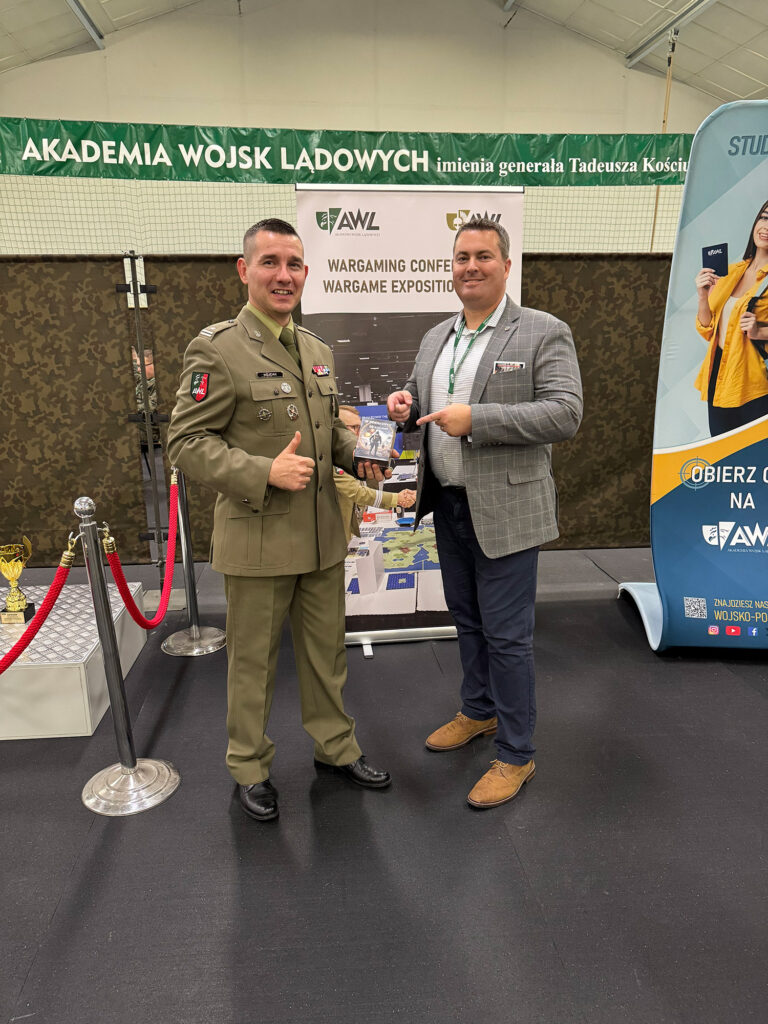
Global Reflections: Insights from the Inaugural Wargaming Conference in Poland
Connecting Professionals through Wargaming
- Alexandria, VA | October 28, 2025
On October 14-15, 2025, I was privileged to attend the inaugural conference on “Wargaming as an Analytical and Training Tool in Military and Civilian Environment,” held at the General Tadeusz Kościuszko Military University of Land Forces (AWL) in Wrocław, Poland. In some ways, the genesis of the conference itself, along with my attendance, was the result of one of the fun quirks of the professional wargaming community: if you meet one member of the community, you’re only one or two degrees removed from knowing all of them.
In his recap of the event, conference organizer Major Łukasz Wójciak (Head of the Department of Territorial Defense, AWL) observed that the idea for this event came from his visit to Quantico early in 2025, along with the participation of AWL cadets in the “Commandant’s Cup” wargaming tournament run by Marine Corps University (MCU). As it happened, his AWL cadets did so well in the tournament that they made it to the championship phase, which was held in person at the Modern Day Marine (MDM) exposition in late April 2025. Coincidentally, Group W, an SPA Company, and I had wargame demonstration tables at MDM as well.

While his cadets fought their way to a top-three finish in the tournament, Major Wójciak talked with me and many other professional wargame exhibitors demonstrating their games at MDM. He left MDM with a peek behind the curtain on the extensive contours of professional wargaming within the US military and across NATO partners.
With Poland on NATO’s front line, Major Wójciak was keenly aware that any crisis with Poland’s unfriendly neighbors could unfold quickly, and the Polish Armed Forces would need to be ready. Wargaming could be a vital tool for enhancing that readiness—and so the seeds of the conference were planted, to leverage the expertise of the professional wargaming world to ensure that Poland and her partners and allies were as ready as they could be should a future crisis involving all of them arise. And with the contacts from MDM, that expertise was only a degree of separation away.
An International Assembly of Expertise
Throughout the summer the conference came together. I was invited to take part both in a discussion panel and to demonstrate the wargame I displayed at MDM, which I had developed as a personal project. The conference agenda was an impressive “who’s who” of professional wargaming across NATO—aside from representation from the Polish military itself, speakers and panelists came from King’s College London, the Center for Naval Analyses, French Future Combat Command, the NATO Joint Force Training Center, the Royal Danish Defence College, RAND Europe, Lithuania’s ISM University of Management and Economics, and private companies such as the UK-based Matrix Pro Sims and France’s Pytharec.
- Wargaming as an Analytical and Training Tool in Military and Civilian Environments
- New Horizons of Wargaming—Competences, Practice, Future
- The Modern Process of Wargame Design
- Wargames as an Implementation Tool for Innovative Technological and Tactical Solutions for Modern Armed Forces
Networking Opportunities at the Wargame Expo
This jam-packed event left a lasting impression on me regarding the scope and scale of applied wargaming across NATO partners. A comment from one panelist stood out: NATO nations “need to standardize data but not creativity.”
The panelist explained that common formats for data inputs, outputs, and reporting could allow wargame results to be effectively compared, shared, and understood. Simultaneously, an open architecture that allowed for innovative designs without getting crushed by the boot of standardized bureaucracy would maximize creativity and collective improvements.
As this conference made clear, virtually every NATO country is implementing wargaming in some fashion—connecting those efforts under a common architecture will make the whole greater than the sum of its parts. The demand signal for such an architecture is there. Attending events such as this helps build the picture of what human and organizational assets underlie the demand signal and which could be leveraged for a future common framework.

A Professional Milestone
Related Posts
We invite you to subscribe and stay informed. Never miss an update as we continue providing the rigorous insights and expert analysis you rely upon to protect and advance our national security.





